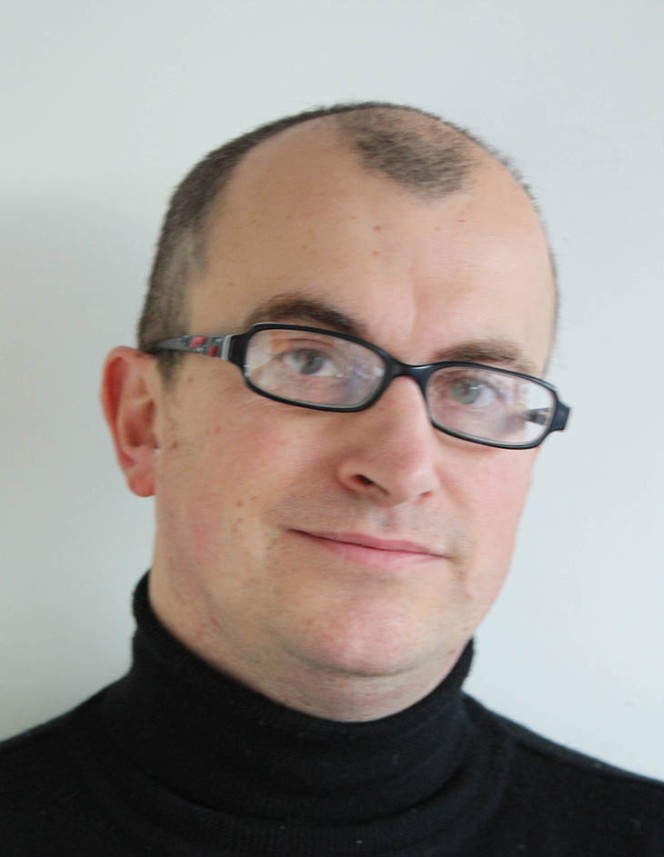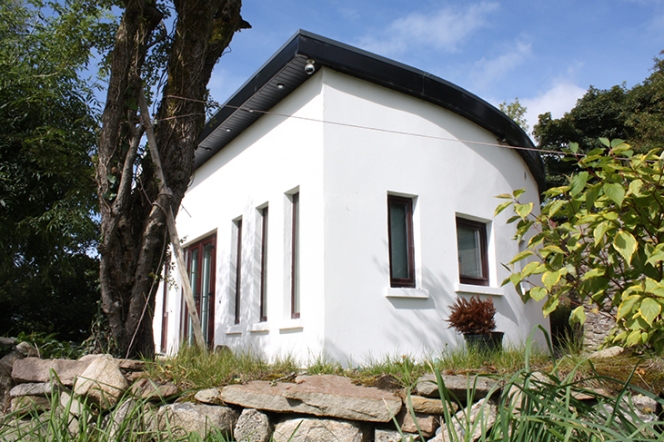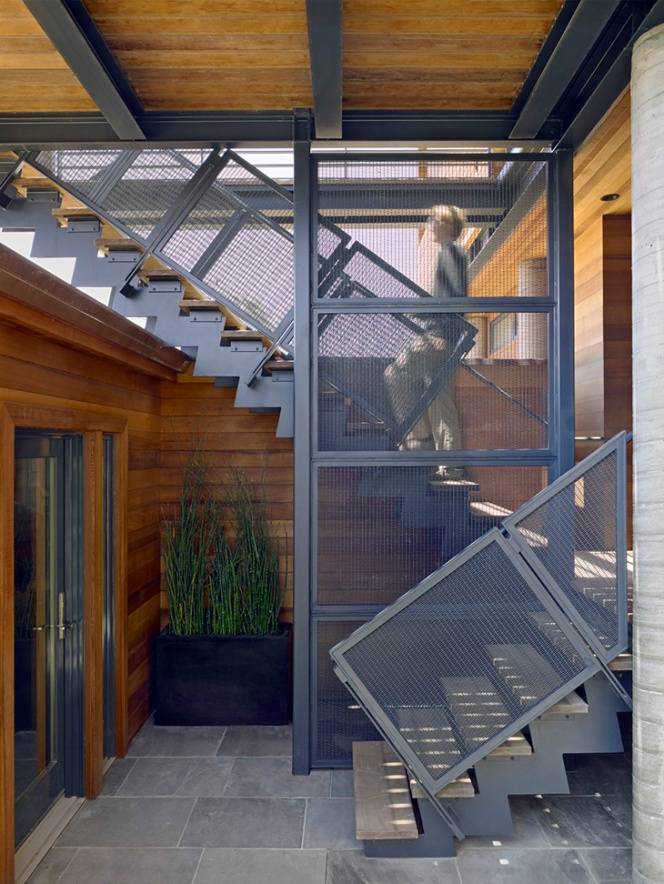Your Cart is Empty
Recent Articles
- Efficiency Meets Innovation: SketchUp 2024 Unveiled
- Maxon One Spring 2024 Release Packs Particle Power, Toon Shading, and More
- TurboCAD 2024 Unveiled by IMSI Design: Discover the New Features and Enhancements
- Exploring the Latest InfraWorks 2025 Updates
- Introducing the Latest Innovations in Autodesk's ReCap Pro 2025
- Discover the Latest Enhancements in Civil 3D 2025
- Exploring the Newest Features and Enhancements in Revit 2025
- Explore the Latest Features in Vantage 2.3 Update
- Explore the Latest AutoCAD 2025 Enhancements: Activity Insight, Smart Blocks, and Apple Silicon Support
- Unveiling Enscape 4.0: Revolutionizing Design with Unified Experience for macOS and Windows Users
The Edge: Mark Stephens – Underground Architecture
January 20, 2015 5 min read
Novedge: Tell us a bit about who you are and what you doMark Stephens: My name is Mark Stephens, I am a 51 year old, UK born architect (RIBA Chartered) now living with my wife and family (4 great boys/men) and working as an Irish architect (RIAI Registered) in the West of Ireland (County Mayo).  Novedge: When and why did you decide to become an Architect?
Novedge: When and why did you decide to become an Architect?
Mark Stephens:I guess the story starts as a small boy watching Thunderbirdson TV; I was always interested in the blueprints that Brains carried around, but my fascination was with the design of the buildings on Tracy Island. As well as being futuristic in design, the buildings had cool features like the retractable, kidney shaped swimming pool and underground hangars. Someone had to do the drawings for those buildings and, from an early age, I thought it could be me.
I'd set my heart on being an architect from about the age of seven; I was good at maths and science and remember going up against the school headmaster who disagreed that Art and Mathematics as subjects would be a good combination. I explained that this combination would be perfect and still stayed resolute on my ambition.Fast forward 30+ years and after qualifying as an architect in the UK I formed a company similar to Novedgeselling design software and providing CAD consultancy to the design profession.
Novedge: Could you talk about Passivhaus Design and show us an example of one of your projects in line with Passivhaus criteria?
Mark Stephens: I met my Irish wife in London, and it was whilst on honeymoon in the West of Ireland that I convinced her (in fact dragged her) to return to Ireland a build a house in County Mayo. In the back of my mind I'd always wanted to design and build our own house. I had no intention, at this stage of my life, to ever return to being an Architect for other people; it was purely luck that after we built our own partly underground house, and the house got a lot of press (there weren't many grass roofed underground houses in the area), that my craft as an Architect was in high demand.  I then re-qualified as an Irish architect and set up Mark Stephens Architects, which I run from a study at my house in County Mayo. As it turns out, I find designing and building for others much easier than building for myself.
I then re-qualified as an Irish architect and set up Mark Stephens Architects, which I run from a study at my house in County Mayo. As it turns out, I find designing and building for others much easier than building for myself.
Our own home that started it all was designed in 2004 and completed in 2006, partly underground with an extensively and brise-soleil shaded south elevation. Even though I had worked for several years as an Architect, this was the first project I'd see from inception to completion. It has several Passive House principles in terms of its design and form, but even though I surpassed the current building regulations at the time, it's woefully short in terms of the insulation that would be required today in order to be certified as a Passivhaus.
If you want to get a better idea of my "underground abode" check out my interview on the national TV programme 'About The House'. This is the piece where I describe our house (which incidentally was barely finished or landscaped!)
Novedge: How did you decide to become a certified Passivhaus consultant?
Mark Stephens: While I was building my own house I vowed to learn as much as possible about the Passivhaus design and construction method. I qualified last year as a certified European Passive House Consultant/Designer and have implemented what I have learnt in several houses and extensions already. I have also set up an online Passive House resource at Teachpassiv. Interesting enough, the word Teachmeans Housein Irish.
Novedge: You also operated several contemporary extensions to traditional cottages. How do you achieve the goal to both restore and renew?
Mark Stephens: As well as qualifying as an RIAI architect in 2006, I went on to take and pass the RIAI Conservation Architect course (Accredited Grade III) and have used the knowledge and information from this in several Irish cottage restorations, refurbishments and extensions. I am keen to acknowledge the old and will repair existing cottages in a traditional way when that can be achieved. But that being said, I enjoy the contrast between what is old (the existing cottage) and the new ( a new extension for example) and I have achieved this in several projects where we have used curves, modernist theories and the combination of traditional and modern materials to emphasize the difference between new and old.  Mark Stephens' Curved Cottage.
Mark Stephens' Curved Cottage.
The joy comes from seeing a building that is neglected come back to life with simply some care and hard work, the example below shows the before and after photographs of a nearby cobblers cottage which is one of the smallest houses I have worked on (10sqm) which was restored to livable extra accommodation to a new house. The restoration uses traditional materials such as lime pointing and timber sash windows and shows what can be achieved with even a completely derelict property. 
 Cottage restoration, before and after.
Cottage restoration, before and after.
Novedge: What is your software of choice? Why?
Mark Stephens: I have been a Vectorworks user since it was MiniCADv3 and I still use the current version (Vectorworks Designer + Renderworks 2015 at time of writing) in my architectural practice and I am still on the beta test programme with Nemetschek Vectorworks. I find the ease that I can produce drawings in 2D, 3D or a full BIM based model to be unsurpassed in Vectorworks and although most of the consultants locally are using software such as Revit or AutoCAD I find I can exchange my drawings with ease.
Novedge: Where do you find inspiration?
Mark Stephens: My inspiration comes from seeing other great Architects and I am lucky that Ireland has some of the greatest Architects in the world to compete with. I like to equate design as telling stories; each design is different but looking back on what is an increasingly expanding body of work there are definite links that tie each 'story' together. International Architects that I admire include the great Australian Architect Glenn Murcutt. His design philosophy of 'Touching the earth lightly'is something I certainly aspire to. I also admire his use of traditional materials in a contemporary manner that is very similar to the Irish vernacular.
If you are looking to build a new house in the West of Ireland or to restore, renovate or extend and existing one, please do not hesitate to contact Mark. And if you are planning on building your dream house yourself, Novedge has all the design tools you need. Just add Ireland!
And don't forget to follow us on Twitterfor more software news and great interviews.
Related articles
Also in NOVEDGE Blog

Maxon One Spring 2024 Release Packs Particle Power, Toon Shading, and More
April 10, 2024 4 min read
Read More
TurboCAD 2024 Unveiled by IMSI Design: Discover the New Features and Enhancements
April 10, 2024 2 min read
Read MoreSubscribe
Sign up to get the latest on sales, new releases and more …






